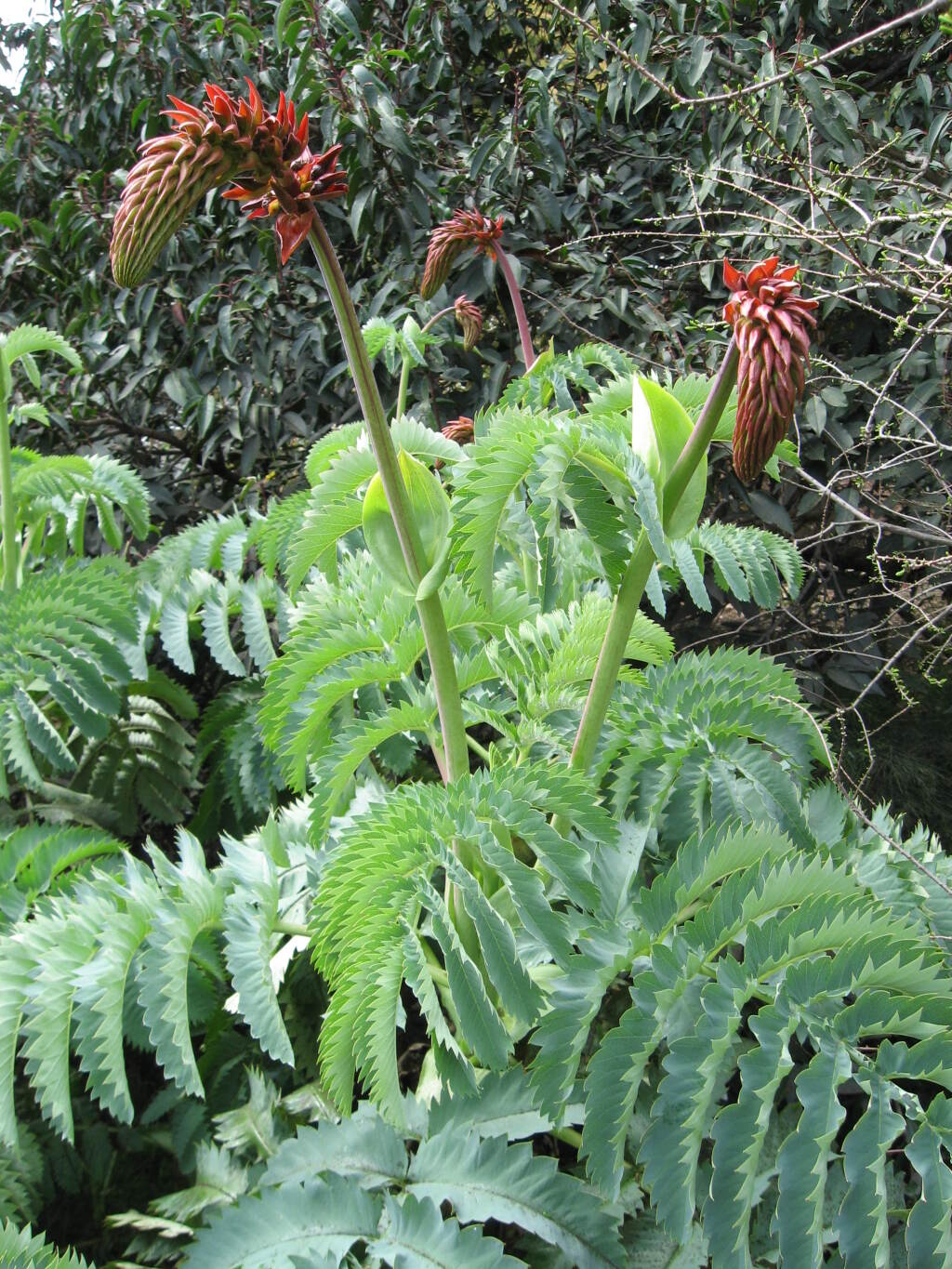Melianthaceae
Evergreen trees or shrubs. Leaves alternate, entire, toothed or pinnate, petiolate; stipules often large. Inflorescences terminal or axillary spikes or racemes. Flowers usually bisexual, zygomorphic, resupinate; pedicels subtended by bracts; sepals usually 5, free or partly fused, imbricate, unequal; petals 4 or 5, unequal, clawed, imbricate; nectariferous disk outside the stamens; stamens usually 4 or 5, free or fused at base, unequal, alternating with petals, anthers 2-celled, dehiscing longitudinally; ovary superior, 4- or 5-celled, ovules 1–4 per cell, basal or axillary, style simple, stigma truncate or 4- or 5-lobed. Fruit a papery or woody capsule, winged, dehiscing apically or loculicidally; seeds 1–10, with endosperm, sometimes arillate.
2 genera with c. 8 species, in tropical and southern Africa; 1 genus naturalised in Australia.
Jeanes, J.A. (1999). Melianthaceae. In: Walsh, N.G.; Entwisle, T.J., Flora of Victoria Vol. 4, Cornaceae to Asteraceae, pp. 138–139. Inkata Press, Melbourne.
 Spinning
Spinning

